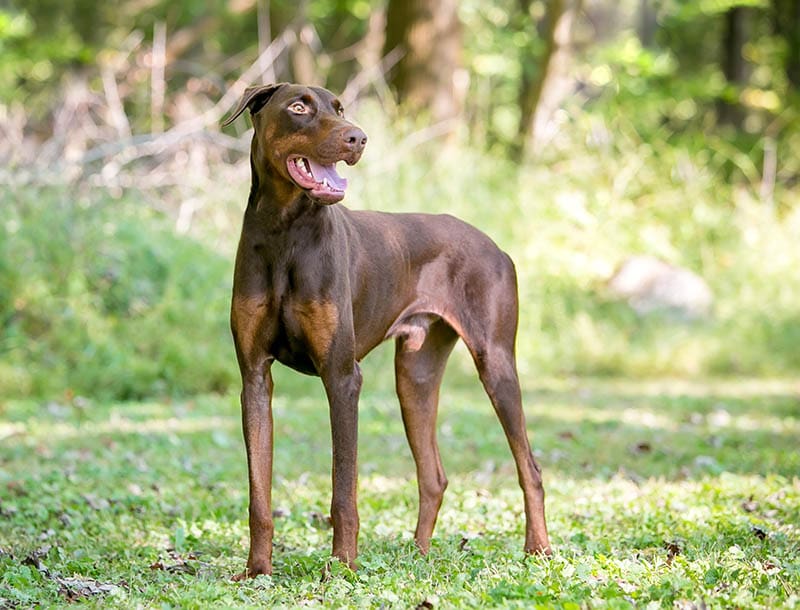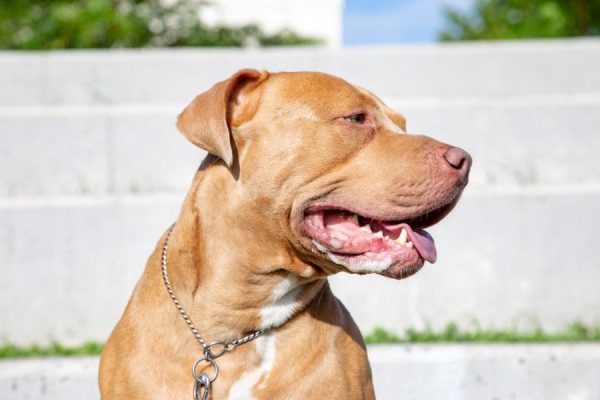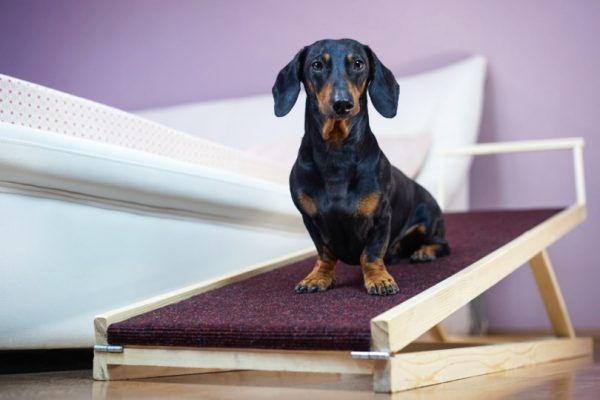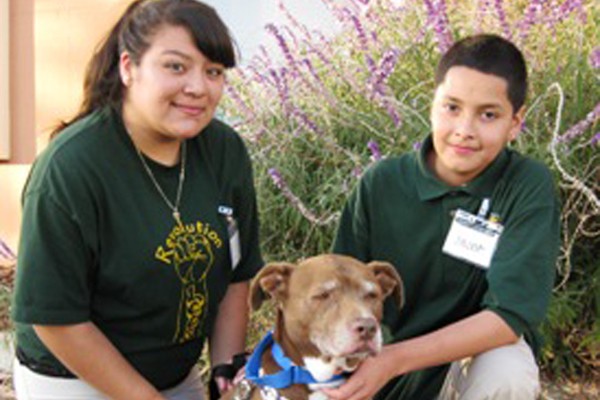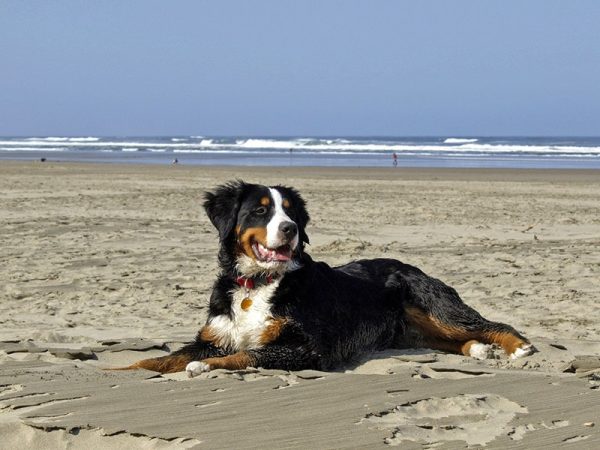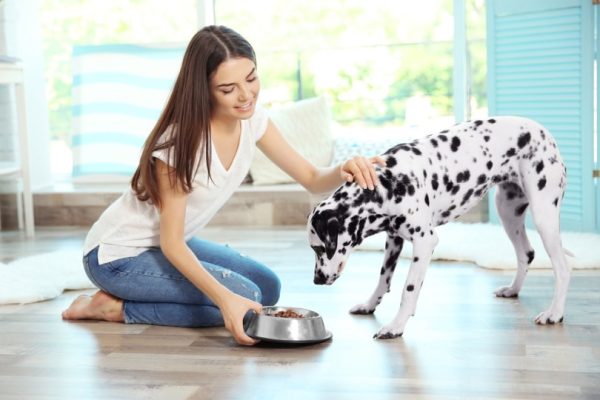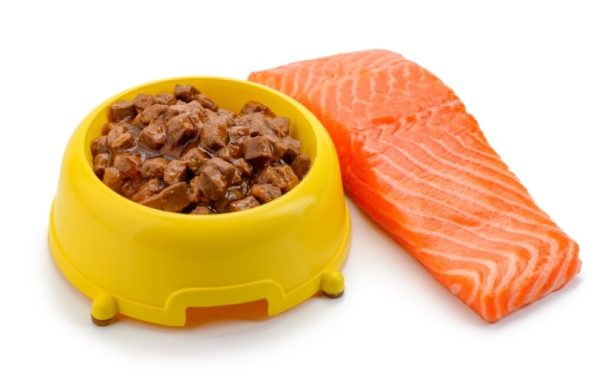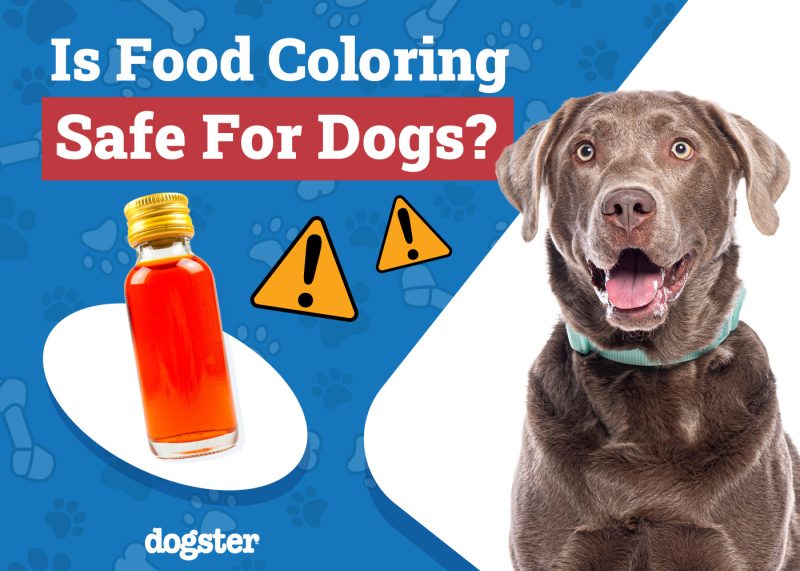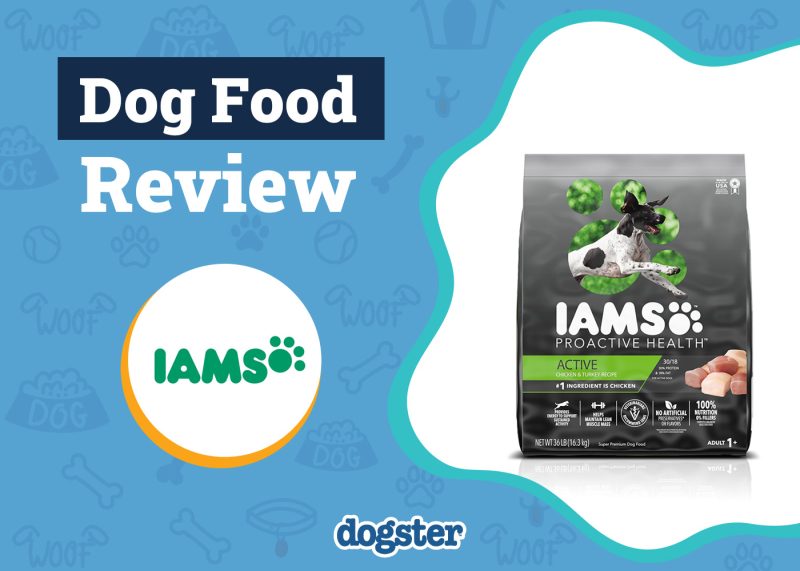If you need to potty train a Doberman, we have good news for you! Dobermans are so smart and eager to please that they’re one of the easiest breeds to potty train. With these tips, and a little patience and consistency, your Doberman will be using the bathroom outside in no time and you’ll feel proud of both your dog and yourself!

The 12 Tips on How to Potty Train a Doberman
1. Location, Location, Location
Choose an appropriate place for your dog to relieve himself. This may be in your backyard, at a nearby park, or even on a designated spot on your front porch or balcony. Once you’ve selected a suitable location, take your dog there frequently so he can get used to it and start to associate it with going to the bathroom.
You’re not just picking this spot for your dog, you’re picking a spot you have to visit, too. So, make sure it’s easily accessible! We recommend a spot close to an entryway or gate, so you’re not trekking across the property every time your dog needs to go out!

2. Give Your Dog Plenty of Time
Potty training is a long game. Don’t expect your Doberman to get it overnight or even within a week. Some dogs take to potty training right away. For others, it takes weeks or months, especially if your dog is still a puppy. The key is to be patient and consistent.
3. Put Your Dog on a Schedule
Dogs are creatures of habit, and they thrive on routine. So, one of the best things you can do to potty train your Doberman is to put him on a schedule. This means taking him out to the designated potty spot at regular intervals throughout the day, even if he doesn’t seem to need to go.
Pay close attention to your dog’s behavior and they will tell you when they have to potty! Puppies may sniff the floor, squat down, walk in a circle, or whimper for your attention when they have to go potty. Paying attention to these cues will make you much more successful, much sooner.
4. Reward Good Behavior
When your Doberman goes to the bathroom in the designated spot, make a big fuss! Praise him enthusiastically and give him a treat. This will reinforce the desired behavior and help him learn that he’s doing what you want him to do. Have treats ready and waiting by the door so you don’t have to go hunting for them when your dog is in the middle of doing his business!
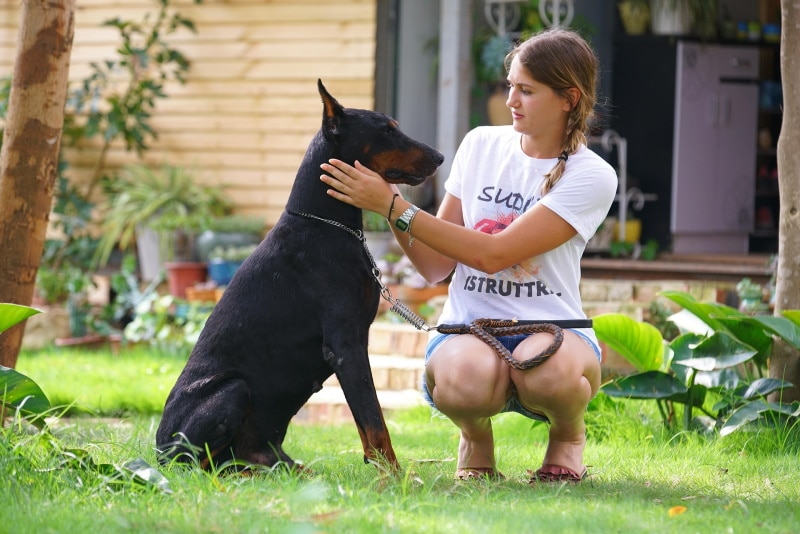
5. Don’t Punish Your Dog
If your dog has an accident in the house, it’s not his fault, so don’t punish him. Dogs live in the moment, and they don’t understand that going to the bathroom inside is bad. So, punishing your dog after the fact will only confuse him and make potty training more difficult. It encourages them to sneak off and toilet in secret as they are fearful of you.
If you catch your dog in the act, gently interrupt him with a noise or command (like “no” or “outside”) and take him immediately to the designated spot. If you can’t catch him in the act, simply clean up the accident and move on.
6. Be Consistent
This can’t be stressed enough. The number one rule of potty training your Doberman is to be consistent. That means taking your Doberman out at regular intervals, rewarding good behavior, and not punishing accidents. Consistency is key! If you’re inconsistent, your dog will be, too. So, make sure everyone in the household is on board with the potty-training plan and knows what to do (and not to do).
7. Schedule Meals and Water at Regular Times
Food and water are two of the biggest potty triggers for dogs. So, it’s important to schedule meals at regular times throughout the day, rather than leaving food out all the time. This may change once your dog is potty trained, but when you’re just starting out, scheduling meals is how you set yourself (and your Doberman!) up for success.
Take him outside before and after meal times, after a nap, and then at 2 hourly intervals during the day.
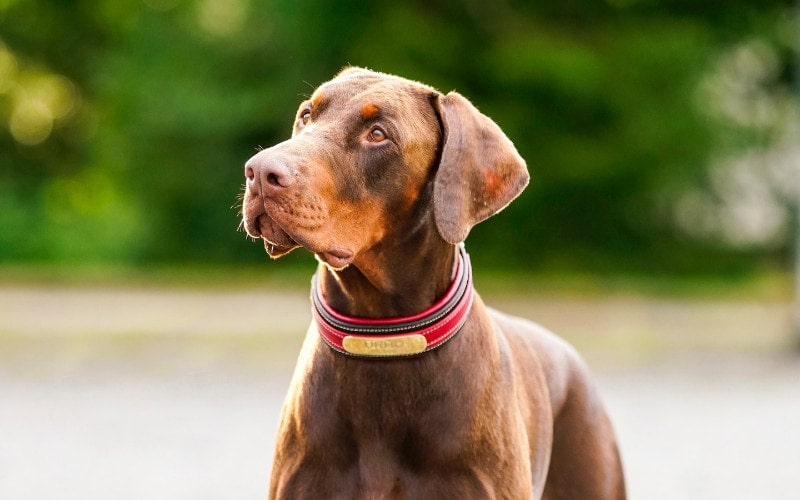
8. Try a Leash
In the early days of potty training having your pup go everywhere you go will help reduce the likelihood of missing the signs that your pup needs to go to the bathroom. Attach them to a leash and to you with a waist belt as you are going about your chores and routine for the day. This is also good training for having them pay attention to you and walk nicely on a lead.
9. Get Professional Help If You Need It
Potty training can be difficult, especially if you have a stubborn dog or one with a medical condition that makes it tough to control his bowels or bladder. If you’re struggling, don’t hesitate to reach out to a professional trainer or behaviorist for help.
Look for a veterinarian, trainer, or behaviorist who uses positive reinforcement methods and has experience potty training dogs. Avoid anyone who uses punishment or force, as this can make the problem worse.
If you need to speak with a vet but can't get to one, head over to PangoVet. It's an online service where you can talk to a vet online and get the personalized advice you need for your pet — all at an affordable price!

10. Teach Basic Commands as You Potty Train
As you’re working on potty training, take the opportunity to teach your dog some basic commands. Having a simple cue word that marks when your dog is doing what you want is important. Often the cue word is a simple “yes”. Say “yes” and give a treat within 1 second to re-enforce the link. Once your dog is familiar with this marker word you can add a potty-specific cue word or phrase such as “go potty” or “go pee”.
Remember that dogs learn best through positive reinforcement!
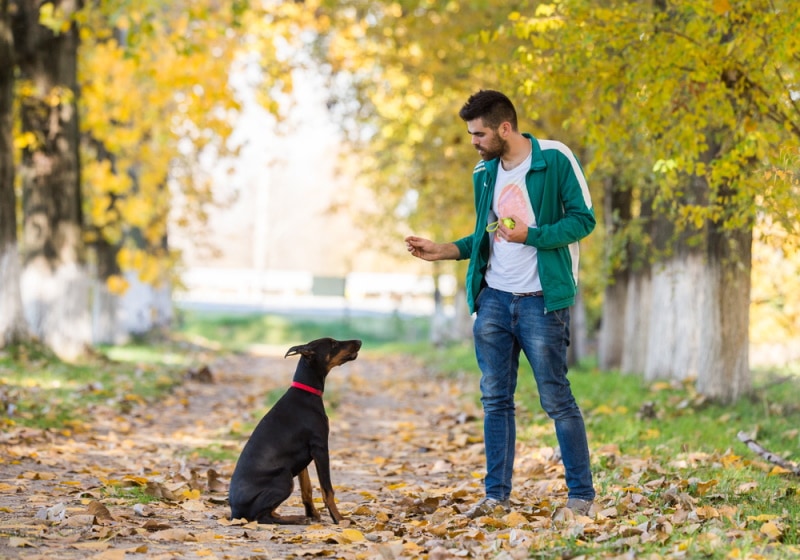
11. Prepare for Accidents
No matter how well you potty train your dog, accidents are going to happen. It’s just a part of life (and training)! Be prepared by keeping a stash of cleaning supplies on hand and being ready to clean up any messes that occur. Use an enzymatic cleaner to break down the urine and remove the scent. This will help discourage your dog from urinating in that spot again.
12. Crate Training
Using a crate for nap times and when you need to leave the house will help reduce accidents. Dogs don’t like to mess up where they sleep. Follow crate training guidelines and be sure to take your pup out to the toilet before they go in and as soon as you let them out.

Conclusion
Potty training can be a challenge, but with patience and consistency, you (and your dog) will get through it! Just remember to schedule regular potty breaks, keep an eye out for common triggers, and be prepared for accidents. With a little time and effort, and keeping these tricks in mind, your Doberman will be potty trained in no time!
See Also:
- How to Potty Train a Bernese Mountain Dog: 9 Expert Tips (With Pictures)
- How to Potty Train a Pitbull: 12 Expert Tips
Featured Image Credit: Mary Swift, Shutterstock
